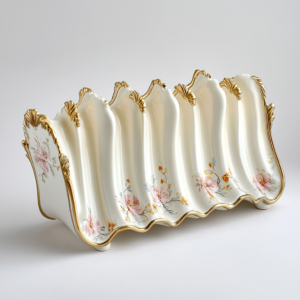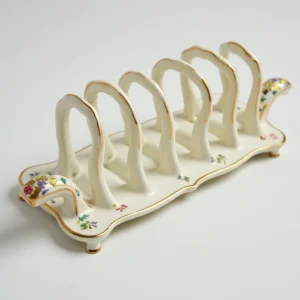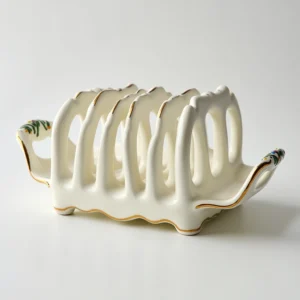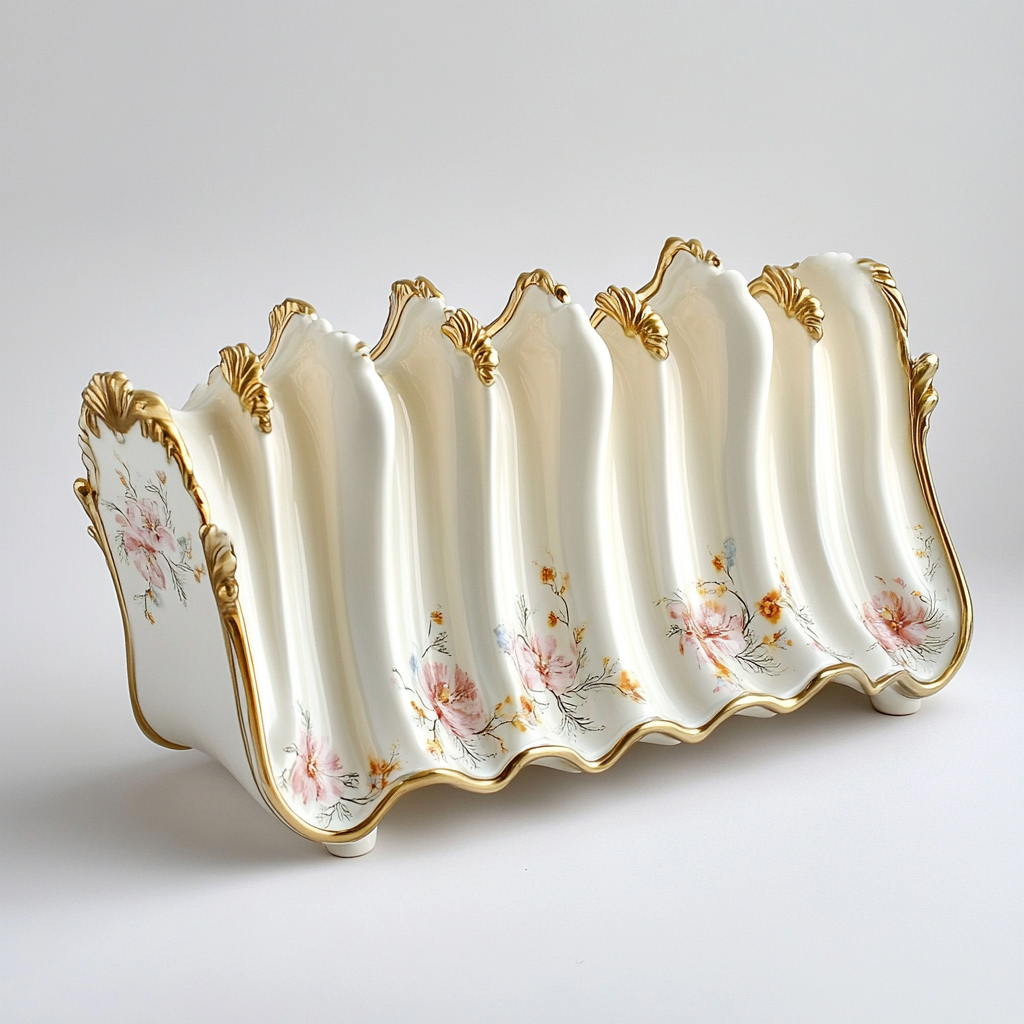The soft clinking of fine porcelain and the gentle rustle of starched linens paint a vivid picture of Victorian breakfast rituals. In an era where every meal was an orchestrated performance, the simple act of serving toast became an art form, epitomized by the elegant porcelain toast rack. These remarkable pieces, far more than mere tableware, tell a compelling story of social aspiration, technological innovation, and the deep appreciation for beauty in everyday life that characterized the Victorian period.
The craftsmanship of Victorian toast racks reflected the era’s dedication to elevating ordinary objects into extraordinary works of art. According to the Victoria and Albert Museum’s extensive ceramics collection, master artisans employed techniques passed down through generations, creating pieces that showcased the pinnacle of porcelain manufacturing. Each rack emerged from the kiln as a testament to human ingenuity, bearing delicate hand-painted florals, precisely applied gilt edging, and intricate patterns that transformed breakfast into a visual feast.
The rise of these elegant accessories paralleled the emergence of a prosperous middle class during Britain’s industrial revolution. As documented in The English Heritage Guide to Victorian Houses, families increasingly viewed their dining customs as opportunities to display refinement and social standing. The morning ritual of toast service, complete with a proper porcelain rack, became a subtle yet powerful indicator of one’s adherence to proper etiquette and understanding of sophisticated living.
Essential Characteristics of Victorian Toast Racks:

- Material Excellence: The finest examples were crafted from high-quality porcelain, often sourced from renowned manufacturers like Wedgwood, Spode, and Royal Worcester, each bringing their distinctive artistic signatures to these functional pieces
- Decorative Mastery: Artisans employed multiple decoration techniques:
- Hand-painted botanical motifs featuring native English flowers
- Gold leaf accents applied with exceptional precision
- Transfer-printed patterns that showcased the latest technological advances
- Relief work that added dimensional interest to the surface
- Engineering Innovation: Victorian designers understood the importance of function alongside form:
- Precisely calculated spacing between dividers prevented moisture transfer
- Sturdy bases provided stability while maintaining visual lightness
- Ventilation channels were ingeniously incorporated into decorative elements
Historical Context and Social Significance:

- Cultural Impact: Toast racks represented more than tableware:
- They symbolized the Victorian appreciation for specialized dining implements
- Their presence indicated a household’s commitment to proper morning rituals
- The quality and style of a family’s toast rack could influence social standing
- Manufacturing Evolution: Production methods reflected broader industrial changes:
- Early pieces were entirely handcrafted by skilled artisans
- Later examples incorporated early mass-production techniques
- Quality control remained stringent throughout the era
- Design Progression: Styles evolved to reflect changing tastes:
- Early Victorian pieces featured heavier, more ornate designs
- Mid-century examples showed balanced decoration
- Late Victorian racks began incorporating Art Nouveau influences
Collecting and Authentication:
- Identifying Genuine Pieces: Important factors for collectors include:
- Manufacturer’s marks and date codes
- Quality of porcelain and glaze
- Consistency of decoration
- Signs of period-appropriate wear
- Condition Considerations: Common issues to evaluate:
- Hairline cracks in the porcelain
- Wear to gilt decoration
- Repairs or restorations
- Structural integrity of dividers
Contemporary Appreciation and Use:
- Modern Applications: Creative repurposing ideas:
- Elegant desktop organizers for correspondence
- Display pieces for collecting cards or photographs
- Decorative elements in period-inspired room settings
- Functional serving pieces for special occasions
- Preservation Techniques: Essential care methods:
- Careful handling to prevent stress on delicate elements
- Appropriate cleaning methods for antique porcelain
- Proper storage and display conditions
- Regular inspection for developing issues
Investment and Market Value:

- Collectible Categories: Different levels of investment opportunity:
- Museum-quality pieces from prestigious manufacturers
- Mid-range examples with interesting decorative elements
- More common pieces suitable for daily use
- Rare forms or unusual designs
- Market Trends: Factors affecting value:
- Provenance and documentation
- Condition and completeness
- Rarity of design or decoration
- Historical significance
Educational Significance:
- Research Value: Toast racks provide insights into:
- Victorian manufacturing techniques
- Social customs and class distinctions
- Technological innovation in everyday objects
- Artistic trends and influences
- Cultural Heritage: These pieces preserve information about:
- Dining customs and etiquette
- Material culture of the Victorian era
- Domestic life and social expectations
- Artistic and technological capabilities
Legacy and Future Appreciation:
- Continuing Influence: Modern impact includes:
- Inspiration for contemporary designers
- Connection to slow living movement
- Appreciation of craftsmanship
- Interest in historical dining customs
The antique porcelain toast rack stands as a remarkable testament to Victorian ingenuity and artistry. These pieces remind us of an era when breakfast was an elegant affair, and even the simplest household items were created with extraordinary attention to detail and beauty. In today’s world of rushed meals and disposable goods, these surviving examples of Victorian craftsmanship invite us to reconsider our relationship with everyday objects and the lost art of mindful dining.
Whether displayed as decorative pieces, used for their original purpose, or creatively repurposed, Victorian toast racks continue to captivate collectors and enthusiasts. They serve as tangible connections to a fascinating period of history, when technological innovation and artistic excellence combined to produce items of lasting beauty and significance. As we increasingly value authenticity and craftsmanship in our own time, these elegant accessories remind us that true quality and beauty never go out of style.

